From the Trenches
Queen of the Old Kingdom
By DANIEL WEISS
Monday, December 11, 2017
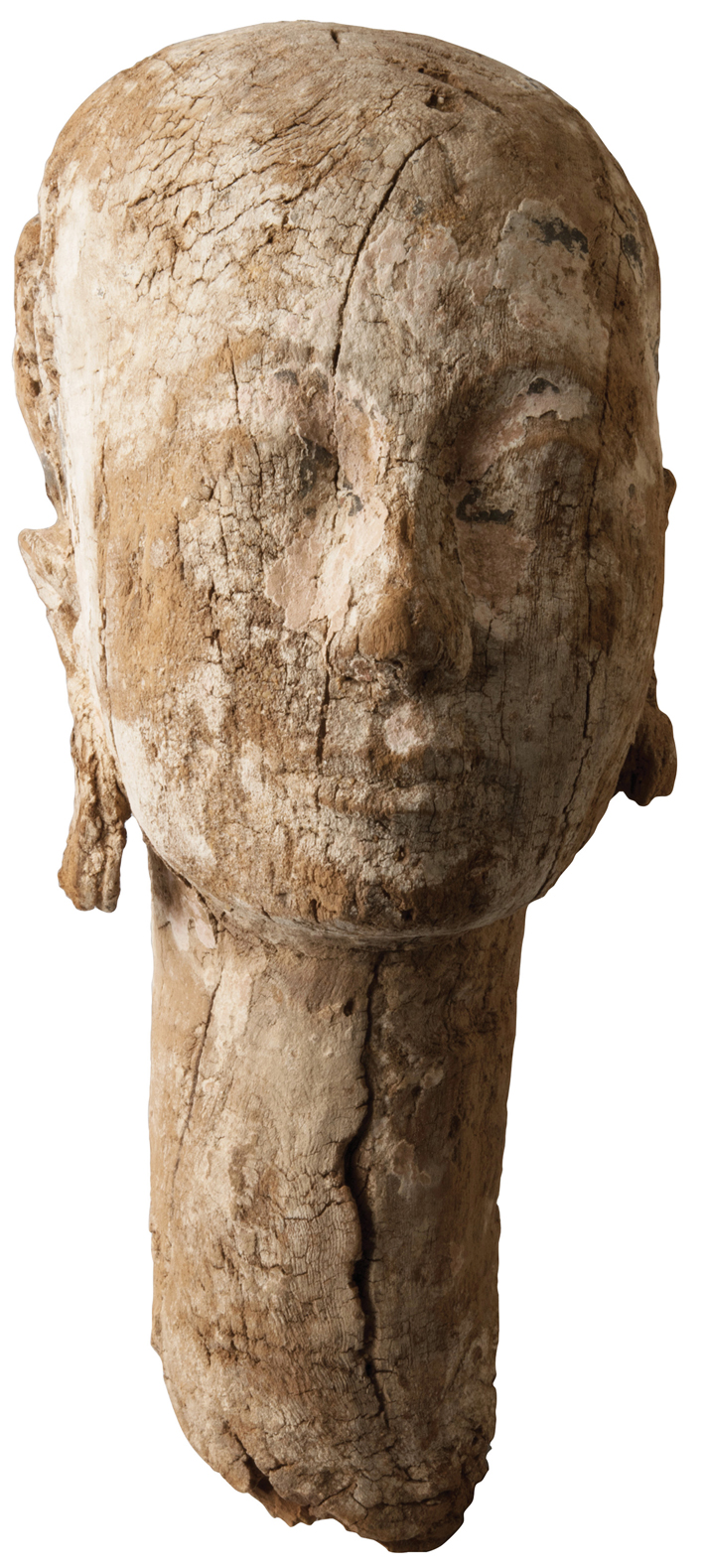 Queen Ankhnespepy II was among the most powerful female leaders of Egypt’s Old Kingdom. She was married to two kings of the Sixth Dynasty—Pepy I and Merenre—and served as regent when her son Pepy II became king at the age of six. New discoveries by the Swiss-French archaeological mission at the Saqqara necropolis are providing further evidence of her importance. The team has found what appear to be the top portions of the two obelisks that would have stood at the entrance to the queen’s funerary temple. Both measure 3.5 feet on a side, and the larger is around eight feet tall, making it the largest Old Kingdom obelisk fragment yet discovered and indicating that the full obelisk would have stood more than 16 feet tall. Notably, the obelisks were made of granite, which was usually reserved for kings.
Queen Ankhnespepy II was among the most powerful female leaders of Egypt’s Old Kingdom. She was married to two kings of the Sixth Dynasty—Pepy I and Merenre—and served as regent when her son Pepy II became king at the age of six. New discoveries by the Swiss-French archaeological mission at the Saqqara necropolis are providing further evidence of her importance. The team has found what appear to be the top portions of the two obelisks that would have stood at the entrance to the queen’s funerary temple. Both measure 3.5 feet on a side, and the larger is around eight feet tall, making it the largest Old Kingdom obelisk fragment yet discovered and indicating that the full obelisk would have stood more than 16 feet tall. Notably, the obelisks were made of granite, which was usually reserved for kings.
The team, led by Philippe Collombert of the University of Geneva, also found a wooden statue head whose stylistic features—thin cheeks, large circular earrings—suggest it dates to the New Kingdom, though there are no wealthy graves from that period in the area. There is a very slight chance the head could represent Queen Ankhnespepy II, says Collombert. Radiocarbon dating will, he hopes, help find the answer.
Masked Man
By ZACH ZORICH
Monday, December 11, 2017
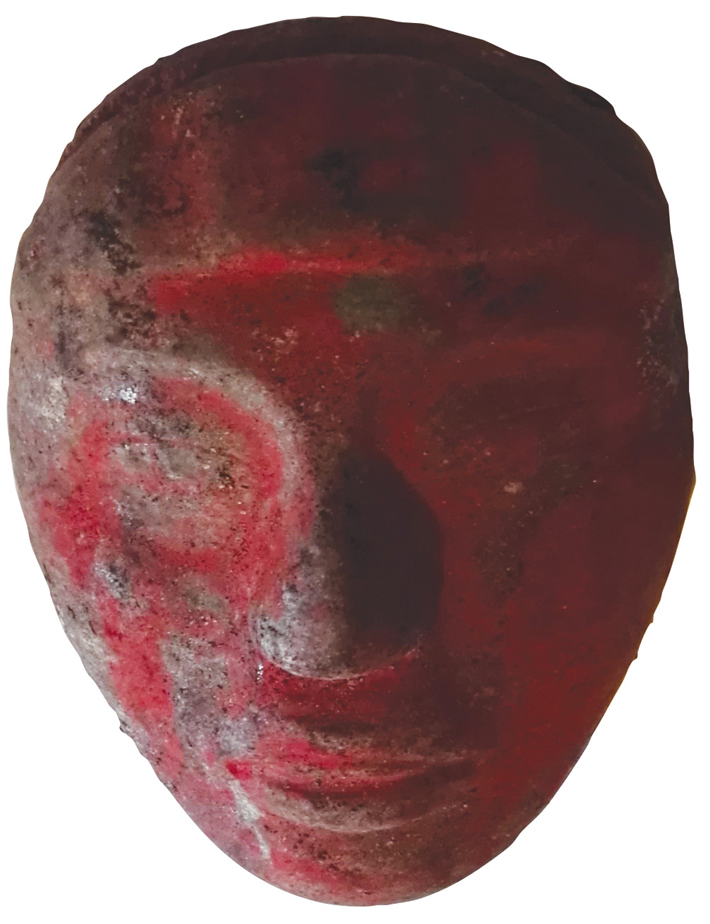 While tunneling beneath a ceremonial platform in the palace complex of the ancient Maya site of Waka’, a team of archaeologists led by David Freidel of Washington University in St. Louis uncovered the tomb of one of the city’s early rulers. The burial chamber contained a set of ceramic cups and a spouted vessel that may have been used to serve a powerful hallucinogenic drink. Pottery styles suggest that the grave dates to between A.D. 300 and 350. Archaeologists also found a small jade mask covered with cinnabar, a bright red pigment, with the skeleton. The mask may have been worn on a belt as an ornament that portrayed a royal ancestor. A rectangular symbol on the mask’s forehead seems to link the ruler to the Kaanul kingdom, a powerful nation that fought for centuries against the kingdom of Tikal, just 45 miles away from Waka’.
While tunneling beneath a ceremonial platform in the palace complex of the ancient Maya site of Waka’, a team of archaeologists led by David Freidel of Washington University in St. Louis uncovered the tomb of one of the city’s early rulers. The burial chamber contained a set of ceramic cups and a spouted vessel that may have been used to serve a powerful hallucinogenic drink. Pottery styles suggest that the grave dates to between A.D. 300 and 350. Archaeologists also found a small jade mask covered with cinnabar, a bright red pigment, with the skeleton. The mask may have been worn on a belt as an ornament that portrayed a royal ancestor. A rectangular symbol on the mask’s forehead seems to link the ruler to the Kaanul kingdom, a powerful nation that fought for centuries against the kingdom of Tikal, just 45 miles away from Waka’.
Spotting the Sun
By JASON URBANUS
Monday, December 11, 2017
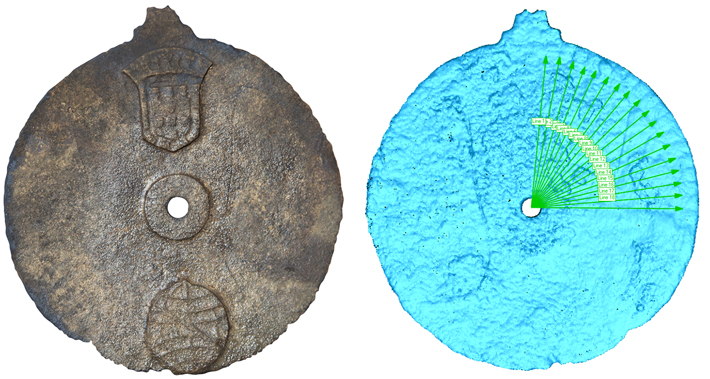
Over the past several years, divers have retrieved thousands of objects from the wreck site of the Portuguese ship Esmeralda off the coast of Oman. The ship was originally part of an armada led by Vasco de Gama, but sank in a storm in 1503. One of the artifacts, a bronze disc measuring around seven inches in diameter, was recently confirmed to be a rare astrolabe, a type of navigational instrument. When the object was first brought to the surface it was unclear what it might be, since all lines and nautical markings had disappeared. Only two symbols remained visible—the Portuguese coat of arms and the personal emblem of King Dom Manuel I. However, 3-D laser scanning undertaken by the University of Warwick revealed 18 etched lines radiating from the disc’s center, each separated by five-degree increments. Sailors used these markings to measure the sun’s height above the horizon at noon, which helped them determine their location.
Bronze Beauty
By ZACH ZORICH
Monday, December 11, 2017
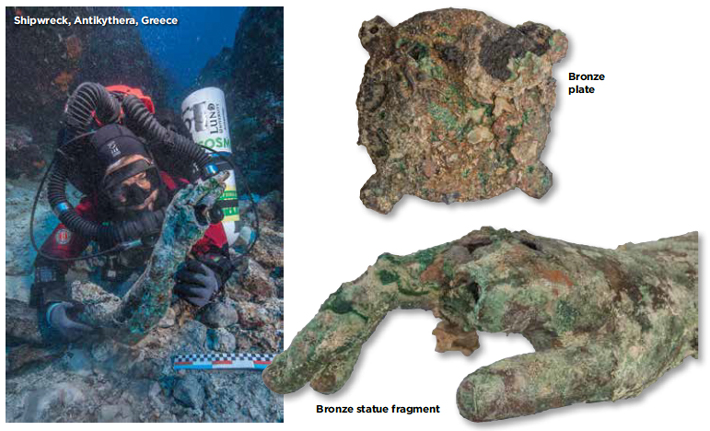
The ship that sank in 65 B.C. off the coast of the Greek island of Antikythera and that once held the famous mechanism that ancient Greeks used to plot the motion of celestial bodies has yielded intriguing new discoveries thanks to a customized metal detector put to use in the 2017 field season. The team turned up a bronze plate decorated with a bull, and an arm from a previously unknown bronze statue, which joins seven to nine other statues previously found at the underwater site. According to the project’s codirector Brendan Foley of Lund University in Sweden, who is working in cooperation with Angeliki Simosi, director of the Ephorate of Underwater Antiquities, the new finds hint that there may be even more ancient Greek artwork lying beneath the sand.
Hot Property
By MARLEY BROWN
Monday, December 11, 2017
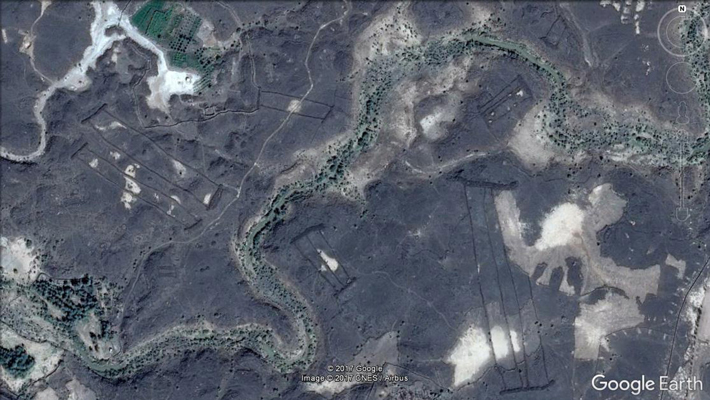
Archaeologists working with aerial and satellite technology have discovered nearly 400 stone structures in a sparsely populated region of Saudi Arabia called Harrat Khaybar, dominated by now-inactive lava mounds. They estimate that the structures, which they call gates, date to the Middle Neolithic period, roughly 7,000 years ago. David Kennedy of the University of Western Australia explains that while the landscape now appears forbidding, the area has supported human communities in periods between eruptions. “The most recent eruption, as visible from the lava flow, was quite limited in its direct impact,” he says. “People lived there before recent times.” Kennedy has not been able to determine the function of the structures from satellite images alone. “I usually look for a simple solution,” he says. “In this case I would prefer an explanation related to everyday concerns such as food and water.”
Advertisement
Advertisement
IN THIS ISSUE
From the Trenches
The Secrets of Sabotage
Off the Grid
A Monumental Find
The Pink Standard
Hot Property
Spotting the Sun
Bronze Beauty
Masked Man
Queen of the Old Kingdom
Underground Party
Assyrian Archivists
Unknown Elites
Front Row Seats
Irish Vikings
World Roundup
Canadian model airplane, ball games in Belize, Roman Tunisia, Arizona turquoise mines, and a Rwandan palace
Artifact
A dog that heals
Advertisement

Recent Issues
-
 May/June 2024
May/June 2024
-
 March/April 2024
March/April 2024
-
 January/February 2024
January/February 2024
-
 November/December 2023
November/December 2023
-
 September/October 2023
September/October 2023
-
 July/August 2023
July/August 2023
-
 May/June 2023
May/June 2023
-
 March/April 2023
March/April 2023
-
 January/February 2023
January/February 2023
-
 November/December 2022
November/December 2022
-
 September/October 2022
September/October 2022
-
 July/August 2022
July/August 2022
-
 May/June 2022
May/June 2022
-
 March/April 2022
March/April 2022
-
 January/February 2022
January/February 2022
-
 November/December 2021
November/December 2021
-
 September/October 2021
September/October 2021
-
 July/August 2021
July/August 2021
-
 May/June 2021
May/June 2021
-
 March/April 2021
March/April 2021
-
 January/February 2021
January/February 2021
-
 November/December 2020
November/December 2020
-
 September/October 2020
September/October 2020
-
 July/August 2020
July/August 2020
-
 May/June 2020
May/June 2020
-
 March/April 2020
March/April 2020
-
 January/February 2020
January/February 2020
-
 November/December 2019
November/December 2019
-
 September/October 2019
September/October 2019
-
 July/August 2019
July/August 2019
-
 May/June 2019
May/June 2019
-
 March/April 2019
March/April 2019
-
 January/February 2019
January/February 2019
-
 November/December 2018
November/December 2018
-
 September/October 2018
September/October 2018
-
 July/August 2018
July/August 2018
-
 May/June 2018
May/June 2018
-
 March/April 2018
March/April 2018
-
 January/February 2018
January/February 2018
-
 November/December 2017
November/December 2017
-
 September/October 2017
September/October 2017
-
 July/August 2017
July/August 2017
-
 May/June 2017
May/June 2017
-
 March/April 2017
March/April 2017
-
 January/February 2017
January/February 2017
-
 November/December 2016
November/December 2016
-
 September/October 2016
September/October 2016
-
 July/August 2016
July/August 2016
-
 May/June 2016
May/June 2016
-
 March/April 2016
March/April 2016
-
 January/February 2016
January/February 2016
-
 November/December 2015
November/December 2015
-
 September/October 2015
September/October 2015
-
 July/August 2015
July/August 2015
-
 May/June 2015
May/June 2015
-
 March/April 2015
March/April 2015
-
 January/February 2015
January/February 2015
-
 November/December 2014
November/December 2014
-
 September/October 2014
September/October 2014
-
 July/August 2014
July/August 2014
-
 May/June 2014
May/June 2014
-
 March/April 2014
March/April 2014
-
 January/February 2014
January/February 2014
-
 November/December 2013
November/December 2013
-
 September/October 2013
September/October 2013
-
 July/August 2013
July/August 2013
-
 May/June 2013
May/June 2013
-
 March/April 2013
March/April 2013
-
 January/February 2013
January/February 2013
-
 November/December 2012
November/December 2012
-
 September/October 2012
September/October 2012
-
 July/August 2012
July/August 2012
-
 May/June 2012
May/June 2012
-
 March/April 2012
March/April 2012
-
 January/February 2012
January/February 2012
-
 November/December 2011
November/December 2011
-
 September/October 2011
September/October 2011
-
 July/August 2011
July/August 2011
-
 May/June 2011
May/June 2011
-
 March/April 2011
March/April 2011
-
 January/February 2011
January/February 2011
Advertisement






